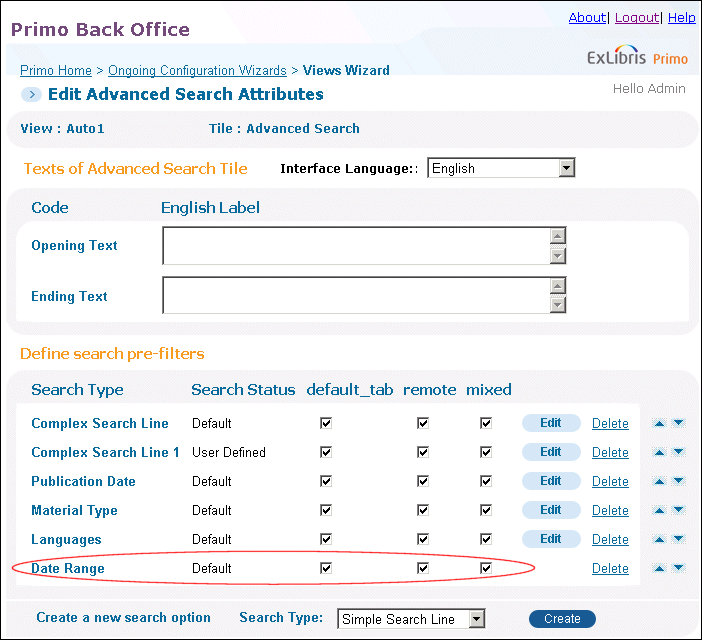Configuring Date Ranges
In the Front End UI, users are able to select from a pre-defined list of date ranges using the Publication Date drop-down list or specify their own date range using the Start Date and End Date fields.

Advanced Search Box - Date Ranges (New UI)
Types of Date Ranges
The date range search option allows users to perform the following types of searches:
-
A date range that includes the following:
-
Range of years – from 1995 to 2000
-
Range of complete dates (which includes the month and day) – from 19950101 to 19950630
-
Range of BCE dates (where each date starts with a minus sign) – from -89 to -100
-
-
An open ended date that includes either a start date or an end date, but not both dates.
-
Start date only – The system searches for records from the specified date and later.
-
End date only – The system searches for all records prior to and including the specified date.
-
-
A specific date by entering the same date for the start and end dates. For example: from 1990 to 1990
Enabling the New Date Range Option
The Date Range pre-filter is configured on the Home Page > Advanced Search tile page in the Views wizard.

Date Range Filter - Advanced Search Tile
Before activating this pre-filter, it is necessary to normalize the data and re-index so that the dates can be found by the SE.
Normalization Rule Changes
The startdate and enddate fields have been added to the Search section of the PNX. To create these fields in the PNX, rules have been added to all of the out-of-the-box normalization rules. They can be applied to your local normalization rules via the templates.
If the startdate and enddate fields do not display in your normalization rules, you may need to select the Display Empty PNX fields check box at the top of the page.
The out-of-the-box normalization rules support the following date formats:
-
Complete year (which may include additional text) – Examples: 1993 and c1993
-
Unknown year where the characters ? and u can be used to express an unknown year. Examples: 199? and 199u.
-
Year ranges using the format Y[YYY]-Y[YYY] or Y[YYY]/Y[YYY]. The characters ? and u can be used to denote an unknown year (such as 1900-1950, 1900-195?). The format Y[YYY] indicates that the year must be one to four digits long.
-
Open ended years in the format Y[YYY] – Example: 1990-
-
Complete date (YYYYMMDD or YYYYMM) – Complete dates require a complete year, which has four digits.
In all of the above formats, a minus sign before the year indicates that it is a BCE date. BCE dates can only be entered as years, excluding the month and day (such as -980).
Associated Transformation Routines
The following transformation routines are used to normalize the different types of date ranges:
-
Format Start Date – Extracts the start date from the input and formats the date, eliminating most non-digit characters and substituting digits for unknown dates.
-
Format End Date – Extracts the end date from the input and formats the date, eliminating most non-digit characters and substituting digits for unknown dates.
-
Complete Start Date – Changes the formatted start date to a complete date, which includes the month and day.
-
Complete End Date – Changes the formatted end date to a complete date, which includes the month and day.
-
Substitute string (using reg. exp.) – Substitutes one string for another string.
-
Replace nonnumeric chars in range – Replaces all non-numeric characters in a range.
Implementing the Date Range Search
After the upgrade to V4, you will need to perform the following procedure to enable this functionality.
Enabling date range search functionality:
-
Update your normalization rules.The Date Range search is based on the following fields that were added to search section in the PNX: startdate and enddate. You will need to update your normalization rules to include these new fields. The out-of-the-box templates have been updated to include rules for the new fields.
-
Execute the pipe (there is no need to re-harvest) and then re-index.
-
Activate the Date Range option with the Views wizard.
-
Deploy your changes to the Front End.

